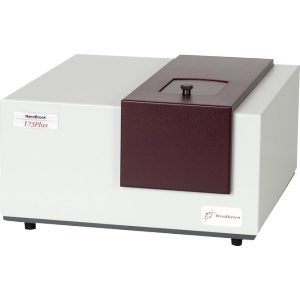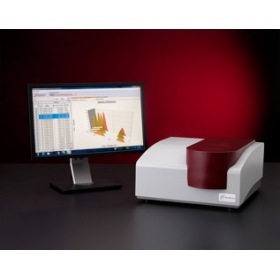锤子
简介:
The authors report that the cationic polymer-oligomer poly(hexamethylene guanidine) (PHMG) in the form of its hydrochloride induces the formation of mixed aggregates composed of anionic magnetiс nanoparticles (magNPs), PHMG and anionic quantum dots (QDs). The magNPs consisted of polymer-coated magnetite nanoparticles, and the QDs consisted of polymer-coated CdSe@CdS/ZnS nanoparticles with an emission maximum at 617?nm. This finding is exploited in a semi-quantitative method for the determination of PHMG. The protocol includes magnetic separation of the mixed aggregates (magNPs/PHMG/QDs) from the sample and excess QDs, redispersion of the aggregates in water, and measurement of fluorescence intensity. The signal is proportional to the concentration of PHMG in the 0.05 to 0.2?mg?L?1 concentration range, with intra-day RSDs of up to 27?%. The limit of detection (LOD) of PHMG in spiked run-off waters, swimming pool water and wastewater is 23?μg?L?1. This PHMG assay is selective in that high concentrations of surfactants and inorganic salts are tolerated. Polyethyleneimine and poly(diallyldimethylammonium chloride) also cause the formation of mixed aggregates but only at higher concentrations. Both a fluorometer and a digital camera (using a 365-nm LED as a light source) were used to measure fluorescence. In case of using a digital camera, the LOD is 40?μg?L?1 and the intraday RSDs are up to 23?%. The method is sensitive, fairly selective and rather simple.
打开失败或需在电脑查看,请在电脑上的资料中心栏目,点击"我的下载"。建议使用手机自带浏览器。
相关产品更多>>
下载该资料的还下载了
推荐学习更多>>
- 注意:
- 1、下载文件需消耗流量,最好在wifi的环境中下载,如果使用3G、4G下载,请注意文件大小。
- 2、下载的文件一般是pdf、word文件,下载后如不能直接浏览,可到应用商店中下载相应的阅读器APP。
- 3、下载的文件如需解压缩,如果手机没有安装解压缩软件,可到应用商店中下载相应的解压缩APP。



































